No. 95
Lube it right
Solutions for squeaking, sticking, stubborn stuff
Every home has some moving parts that stick or squeak. So lubricants are an essential tool for every homeowner. Here’s how to choose them and use them.
Two lubricants you must have
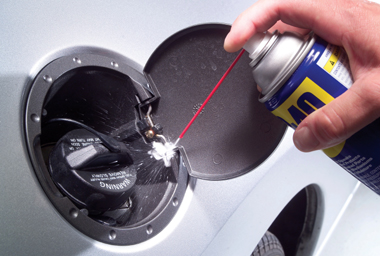
General-purpose lubricant
This stuff is amazingly versatile. Aside from lubricating just about anything, it penetrates rust, inhibits rust and even works as a cleaner on gummy stuff like adhesives. For most jobs, there are better products; but no other product can do as many jobs.
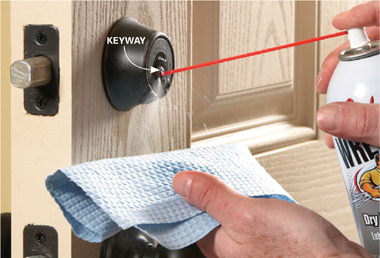
Dry lubricant
It goes on as a thin liquid but dries fast to form a slippery film that won’t gather dust. That’s a huge advantage. In some situations—on drawer slides, for example—a grimy mix of oil and dust looks bad. In other cases—like locks—grime will cause parts to stick.
And two more you might need
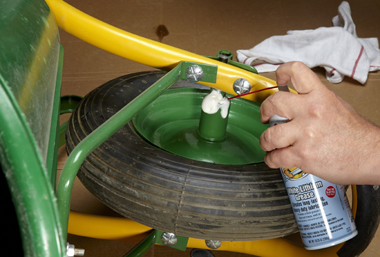
Lithium grease
Available as a paste or spray, this is the best lubricant for high-load parts like axles and bearings. It also lasts longer and inhibits rust better than most other products, so it’s great for outdoor tools and hardware.
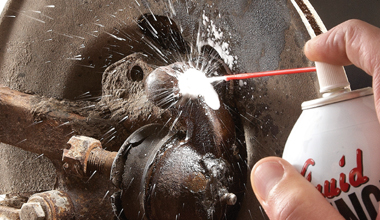
Penetrating oil
To free up stuck screws or rusty bolts, this is the best choice by far. But it’s not a good permanent lubricant; after using it, clean off the parts and then lube with a different product.
Avoid the off-brands
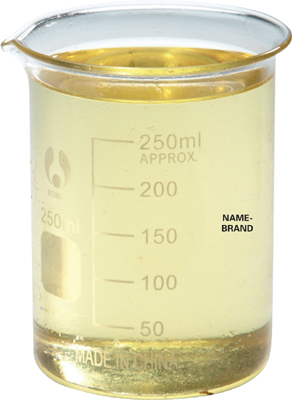
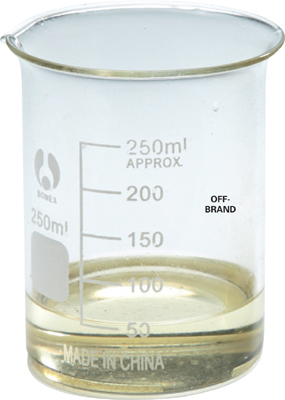
Cheap lubricants often contain more solvent and less of what matters. These two beakers show how much lubricant was left after the solvent and propellant evaporated from a brand-name product and a no-name brand.
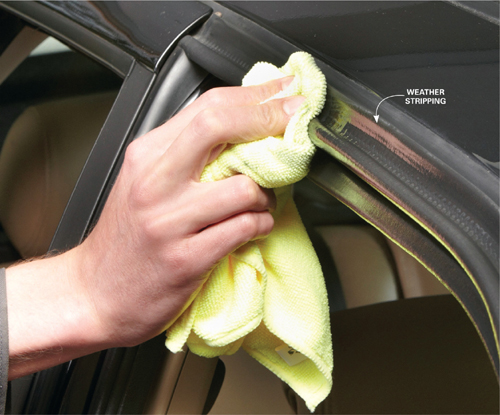
Lube weather stripping
If you have sticky weather stripping on doors or windows, or on your home or car, spray some dry lubricant on a rag and wipe it onto the weather stripping. Allow the lubricant to dry before closing the door or window.
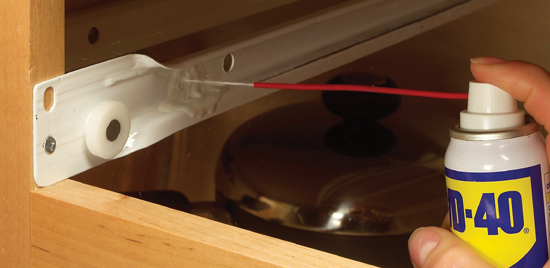
Beware of overspray
Spray lubricants are easy to apply where you want them—and where you don’t. Aside from just making a mess, some types will damage paint or plastics, and some (especially dry lubricants) prevent adhesion during a future painting project. Often, the best way to prevent overspray is to spray lubricant on a rag then wipe it on. When that won’t work, protect surfaces with plastic or cardboard.
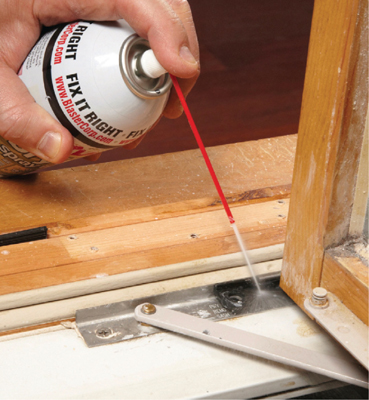
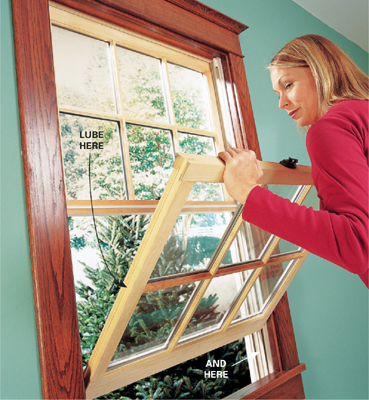
Lube stubborn windows
Often, a little lubricant can make sticking old windows glide like new. If you have double-hung windows, spray some dry lubricant on a rag and wipe the tracks on both sides of the window opening. If you have tilt-in double-hung windows, you can also lubricate the sides of the sashes. On casement windows, lubricate all the moving parts on the crank-out mechanism and the sliding bracket at the top.









